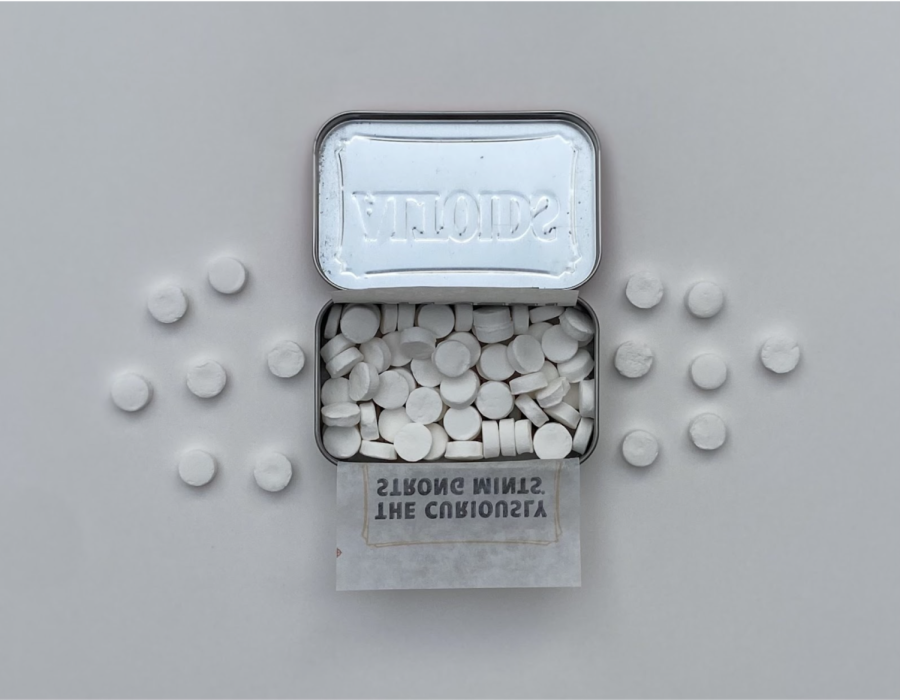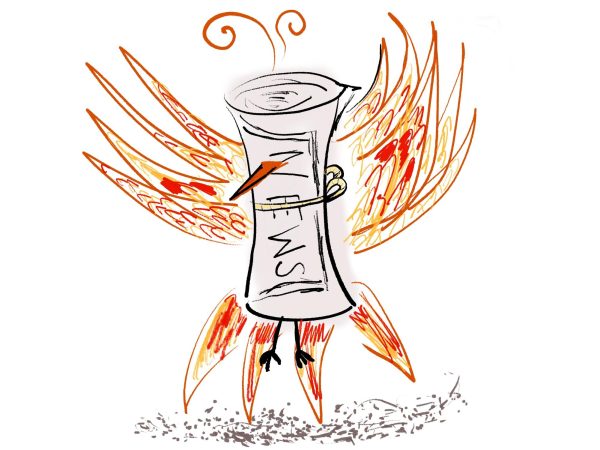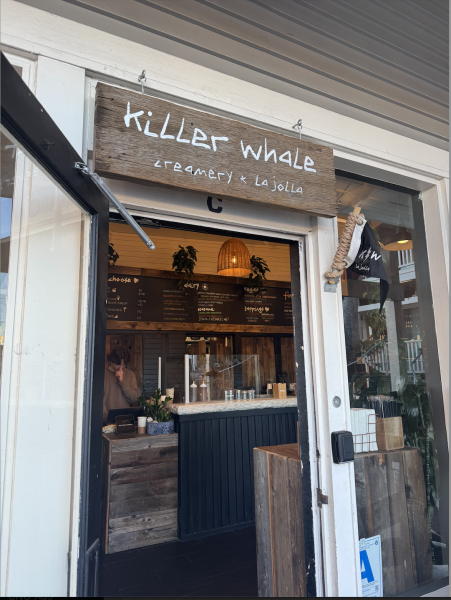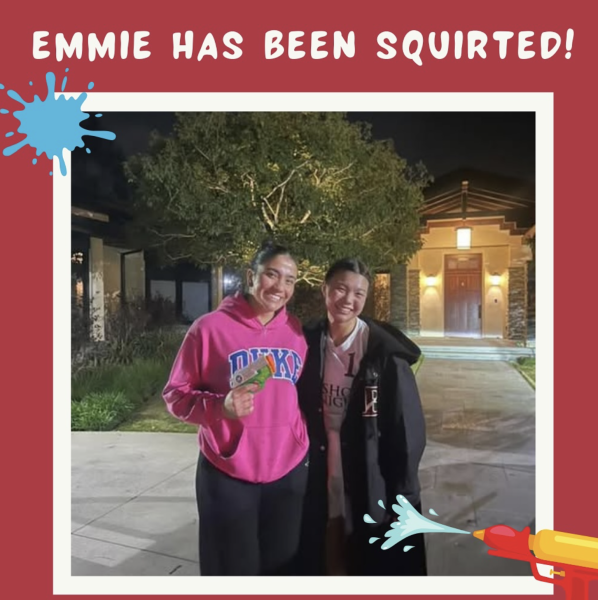A Deadly Disguise
What you need to know about the growing teen fentanyl crisis
Altoids breath mints look much like acetaminophen and Percocet pills, which can both be laced with fentanyl. Thus, it is a matter of life and death to check the authenticity of any drug you take.
Trigger Warning:
This article contains sensitive information about drug overdose and overdose-related deaths. Please take caution in reading the following:
If given one of each, would you be able to tell the difference between an acetaminophen tablet, a percocet tablet, or a breath mint if given to you at random? Further, could you identify which, if any, may contain fentanyl?
A fentanyl crisis has been surging through the U.S., and specifically California, in which teens are dying due to accidental fentanyl overdoses. In terms of combatting the crisis, education on what fentanyl is, what fentanyl overdose looks like, and how to treat fentanyl overdose can help Bishop’s community members make informed decisions on what they put into their bodies, and teach them how to help others who experience a fentanyl overdose.
Fentanyl, as defined by the Centers for Disease Control and Prevention (CDC), is a “synthetic opioid, approved for treating severe pain, typically advanced cancer pain.” A synthetic opioid is a “[substance] that [is] synthesized in a laboratory and that [acts] on the same targets in the brain as natural opioids[…]to produce analgesic (pain relief) effects,” (United States Drug Enforcement Administration). The CDC reports that between 2020 and 2021, synthetic opioid-related deaths increased from 57,834 in 2020 to 71,238 in 2021 (CDC).
According to the United States Drug Enforcement Administration (DEA), “fentanyl is…similar to morphine (another potent type of paint killer) but about 100 times more potent,” making small doses deadly. In fact, the DEA states that “Two milligrams of fentanyl can be lethal depending on a person’s body size, tolerance and past usage.” Thus, taking one misidentified drug or adulterant (drugs composed of multiple different drugs) laced with fentanyl could be a matter of life or death for the user.
Organizations such as the CDC have concluded that the rise in fentanyl overdose-related deaths is due to adulterants (drugs composed of multiple different drugs) laced with fentanyl, and the CDC says that “[fentanyl] is often mixed with heroin and/or cocaine as a combination product—with or without the user’s knowledge—to increase its euphoric effects.”
Junior Grace Dabir shared her concern about fentanyl-laced substances. “It’s definitely sad [because] you have no idea [what you’re taking] and someone who could have malicious intentions could hurt you really quickly,” she said.
In keeping with Grace’s concern, a teen may think that they are taking a “commonly misused prescription [drug] such as oxycodone and alprazolam,” or any drug at all for that matter, but are in fact taking fentanyl (CDC). This was the case when, in May 2021, Cathedral Catholic student Connor White took a supposed prescription pill that was laced with fentanyl and died (Del Mar Times). Still, many people like to believe that the growing threat of fentanyl is distant from their own communities.
According to Dr. Andrew Kolodny, medical director of opioid policy research at Brandeis University’s Heller School for Social Policy and Management, however, in an interview with the National Broadcasting Company (NBC), “In California in particular, there have been many reports of overdoses involving counterfeit pills, particularly overdoses in adolescents.” And The Bishop’s School requires all rising freshmen to take a health class that addresses drug issues.
Bishop’s Health Class and Physical Education Teacher Ms. Meghan Carr explained that the curriculum for Health has become more fentanyl-focused in the past two years, as adulterants have prevailed and “the uptake of people overdosing and dying [from fentanyl] are not usual abusers.”
“This is a whole different ball game,” said Carr, when commenting on how fentanyl had never been much of an issue when she was in high school. As for the present, though, she advises the Bishop’s community to “think about what you’re putting into your body,” and “think about where you want to be when you graduate Bishop’s,” as a means of preventing the growth of fentanyl’s prevalence in our community.
Bishop’s School Nurse Susie Fournier recalled other efforts Bishop’s enacts to protect its community from the dangers of fentanyl: keeping two boxes of Naloxone on campus at all times, and ensuring that teachers know how to properly administer it. Naloxone is a “nasal spray” medication made by Narcan which “rapidly reverses the effect of opioids” (Kaiser Permanente). One box of Naloxone is in the nurse’s office, and the other is in Athletic Trainer Mr. Jason Charlebois’s office in the weight room.
If you should find an individual apparently unconscious, Nurse Fournier advises along with Emergent BioSolutions, you would want to check for the following symptoms of opioid overdose and call 911:
- “unusual sleepiness and you are not able to awaken the person with a loud voice or by rubbing firmly on the middle of their chest (sternum)”
- “breathing problems including slow or shallow breathing in someone difficult to awaken or who looks like they are not breathing”
- “the black circle in the center of the colored part of the eye (pupil) is very small, sometimes called ‘pinpoint pupils,’ in someone difficult to awaken”
“If symptoms are present, administer Naloxone in one nostril of the unconscious individual,” Fournier says. And, if after 2-3 minutes the previously mentioned symptoms of overdose continue after giving the first dose of Naloxone, administer a second dose of Naloxone in the other nostril, say Fournier and Emergent BioSolutions.
Being able to identify and act fast upon opioid overdoses are not the only preventative measures that can save lives from fentanyl’s irreversible tax. New School Counselor Ms. Lauren Gray suggests that students who know substance abusers should support them by “[keeping] lines of communication open,” and “showing them empathy, as everyone’s struggle is unique.”
Ms. Gray emphasized, “Bishop’s is a really unique community in that there is a ton of support and a ton of really thoughtful adults who want to brainstorm and partner with students to find solutions [to teen drug issues].”
Hence, Bishop’s has provided various resources for students who may struggle with substance abuse, including but not limited to School Counselors Mrs. Megan Broderick (‘98) and Ms. Gray, as well as other faculty members who want to encourage students to be their best, healthiest selves, and support students who are struggling with substance abuse.
For anyone struggling with addiction, or seeking more education on this subject, the link to Natural High’s short film Dead On Arrival, is a great resource. This film is appropriate for younger viewers and addresses the risk of ingesting fentanyl that is involved in substance experimentation: https://youtu.be/dG8qCjvesPA
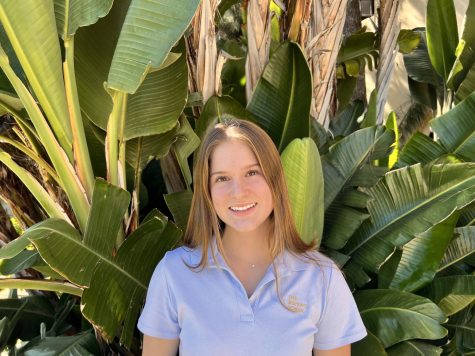
Reagan Kliber is a junior and a Staff Writer for The Tower. This school year is her first year on staff and she is looking forward to growing in her reporting...


